Do you remember when it was easy and you either tiled all the way to the ceiling in your bathroom, or if funds were limited, you tiled to 1800mm in the shower cubicle and to 1200mm everywhere else? Thankfully,...
Do you remember when it was easy and you either tiled all the way to the ceiling in your bathroom, or if funds were limited, you tiled to 1800mm in the shower cubicle and to 1200mm everywhere else? Thankfully, design ideas have come a long way and there are now a myriad of choices to make for bathroom wall tiles. This, of course, is good and bad. There is so much choice in the market now for the style of wall tiles, but also some fabulous inspiration for how to combine these with some great results.
So, when I am asked, how high should my bathroom wall tiles be, I have lots of answers. It all comes back to the style of your house and the look you are trying to achieve. Of course, budget, as ever, plays a big role, but where limited funds used to be a problem, there are now some great ideas to achieve the look you want without breaking the bank. I have lots of inspiration and ideas to show you below, when you ask yourself, how high should my bathroom wall tiles be?
This post includes some affiliate links. If you click on one of these and make a purchase, I may receive a small commission, however this in no way affects the price that you will pay.
Tiles to the ceiling
There is no doubt that tiling to the ceiling can look stunning. I particularly like this look for a luxurious style which I always feel works the best with floor and wall tiles that match. So, if you have the funds and you love this look of luxury, this is an outcome that will suit you. The downside to this look though is that if you tire of the style of the tiles, there is a lot of expense to change the look.
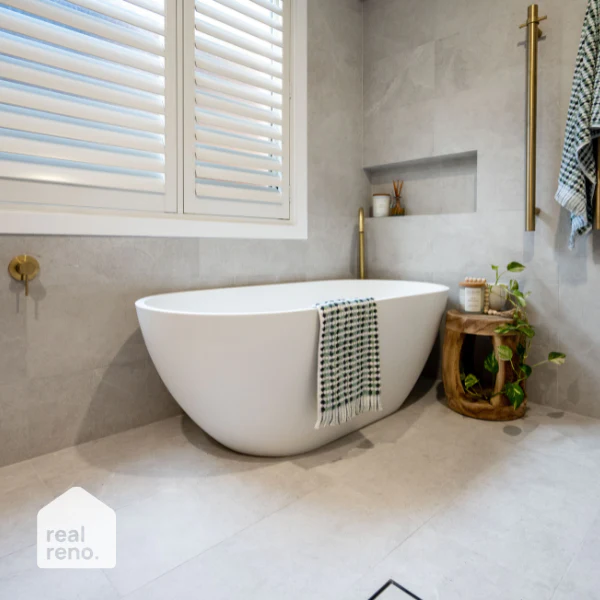 The Blue Space
The Blue Space
Wall tiles with panelling
Unless you have been living underneath a rock, you will have seen how popular interior wall panelling has become. I really love this treatment as it adds texture and a new design element to a space.
The bathroom below is very appealing as it has strong tonal contrasts. The dark grey tile is very effective on the floor and makes a great partner to the dark timber vanity. However, if this was used on the walls to the ceiling, the look would be overbearing. By introducing the wall panelling, you can bring the dark floor tile to 1200mm high so that it works well with the freestanding bath. The dark grey therefore becomes a strong feature in the scheme, but it isn't a dark bathroom.
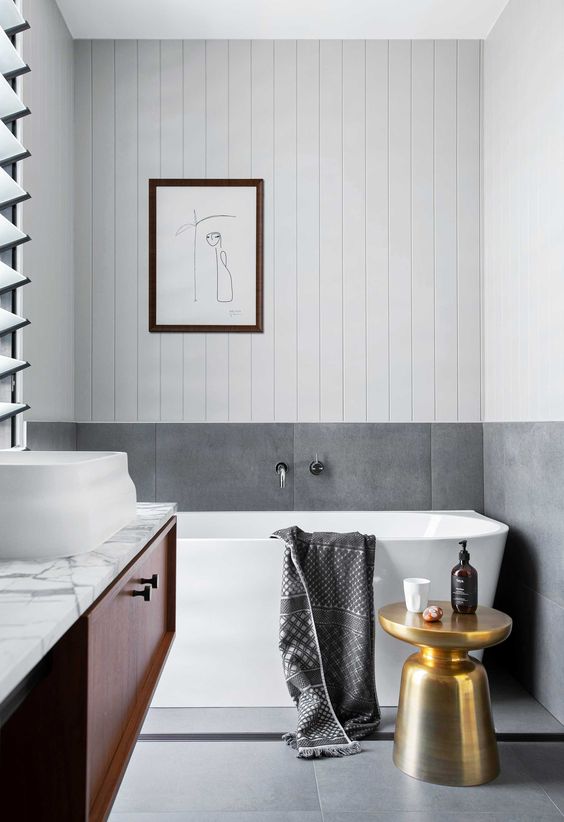 Homes to Love
Homes to Love
The appeal of wall panelling is that you can paint it any colour. Therefore if you want to update your bathroom, this becomes a simple weekend project.
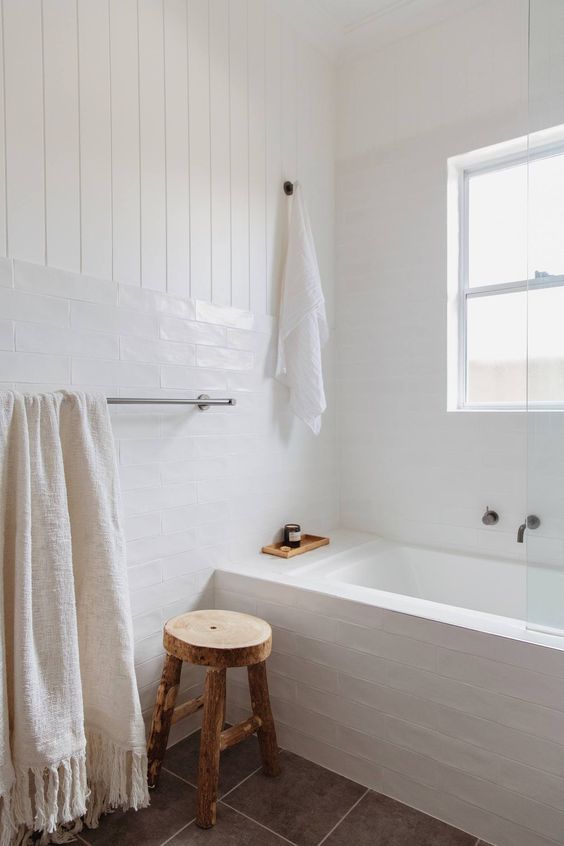
Wall panelling also works as an effective change of texture. In the above all white scheme, this look may have been too clinical with floor to ceiling subway tiles, but with a change of wall treatment, there is relief in the look, even though it is all one colour.
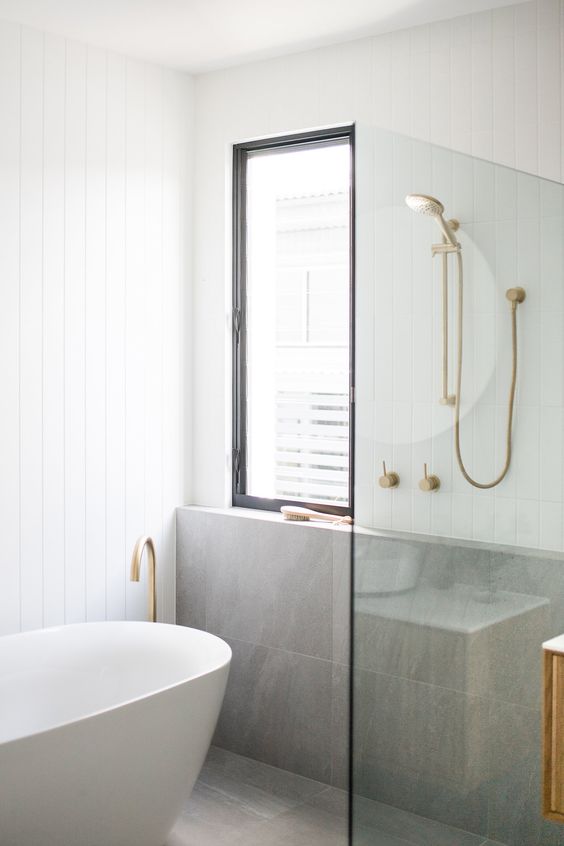 Kalka.com.au
Kalka.com.au
Often in a bathroom scheme it is only the wet areas, like the shower cubicle, that require floor to ceiling tiles. The design above is very clever as the wall and floor tiles are the same to the height of the window, but then a simple subway tile laid vertically, extends from there. With white v groove panelling on the other walls of the bathroom, it is cleverly disguised and blends in very well.
Related: How to choose interior wall panelling
Tiling to the ceiling with feature tiles
If you are unsure about wall panelling, but don't want the same wall tiles as the floor, then there are some great options.
Introducing a ledge in the shower is not only very practical, it also provides a visual break in the wall tiles. This is very effective for bathrooms that have high ceilings, as it focusses the eye on a mid point rather than the ceiling. A change of tiles on a separate wall, also introduces some texture and interest into the scheme.
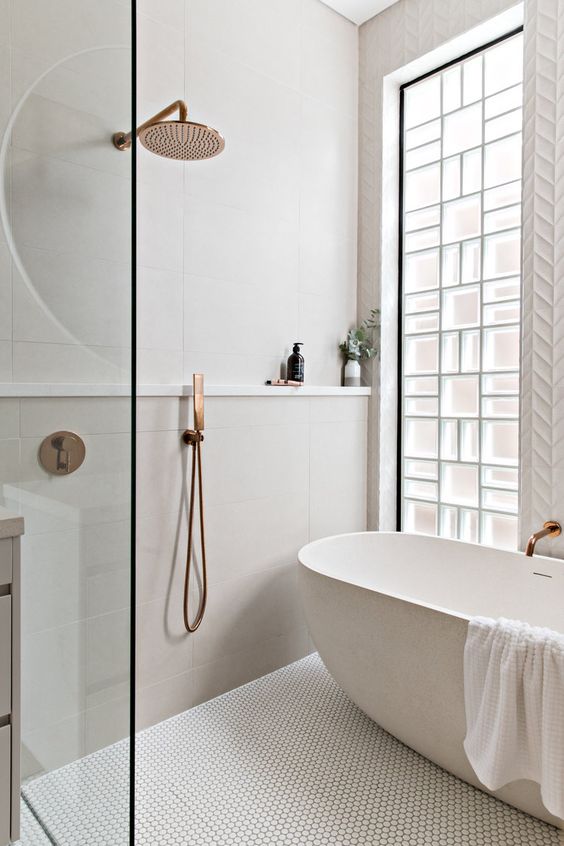 thepalmco.com.au
thepalmco.com.au
Tiling with over height ceilings
As stunning as high ceilings are, it would be prohibitively expensive and also visually unappealing to tile to the ceiling. You therefore need to select a cut off point which can be at a window or the height of the lowest part of the ceiling.
So that this change of wall treatment is seamless, it is a good idea to tile in the same colour or tone as the paint on the walls. However, this can be very bland and boring, so by tiling to a lower point in the wall with the floor tile or another feature tile, you overcome this problem.
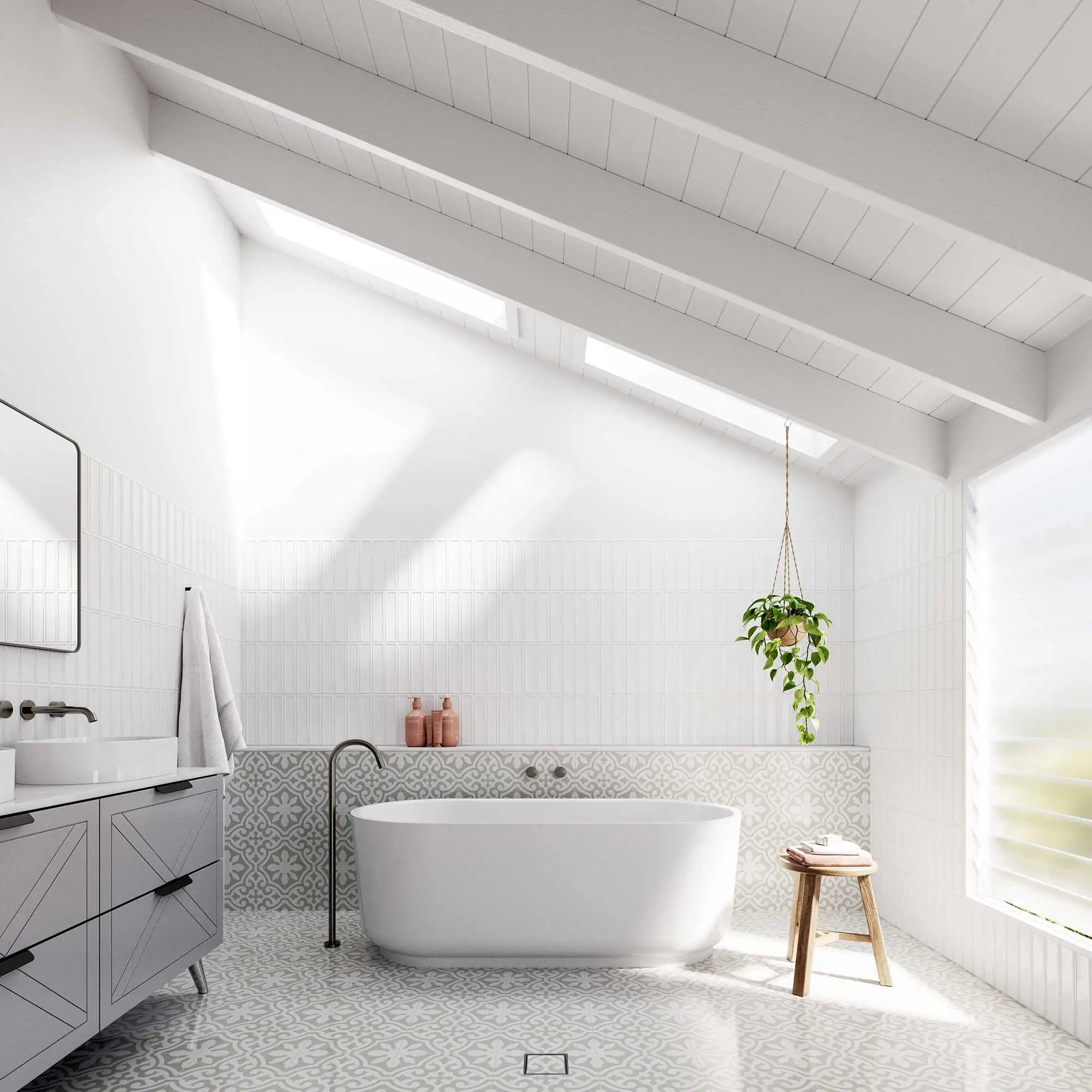 The Blue Space
The Blue Space
The treatment of this bathroom is really effective. It ensures that the bath is a feature in the room, rather than blending into a white background, and it also provides fabulous visual relief from the white tiles.
Leaving the walls plain
Just simple paint can also be very effective if you don't want to tile to the ceiling. If you do just tile to 1200mm outside of the shower area, then I do like to cap the tiles rather than leave a raw edge. Sometimes you can buy a capping tile that matches the tile, or you could add a piece of timber capping. This can be very effective if you have a timber vanity. Simple powdercoated aluminium capping which is matched to the colour of the tile, is also very effective and a simple solution.
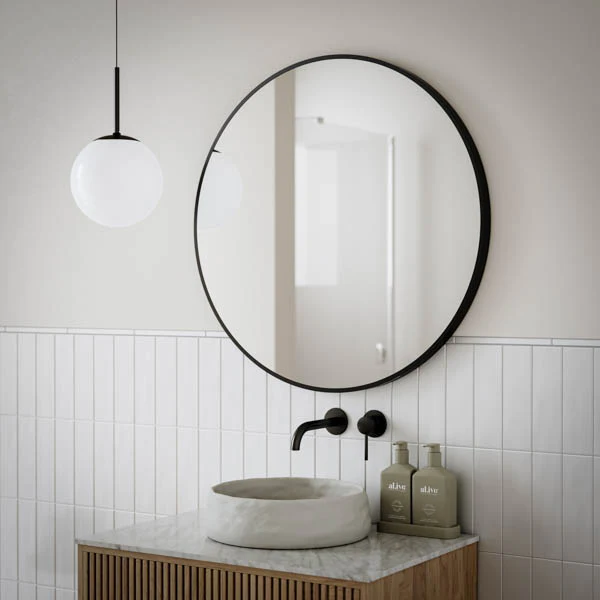 The Blue Space
The Blue Space
Tapware should always be on either wall panelling that is suitable for a wet area, or on tiles. However, you can place your bathroom mirror slightly over the tiles and on the plain wall.
Always ensure if you are painting the walls in a bathroom that you select paint that is suitable for a wet area.
Of course, you don't need to have tiles at all, unless you are in a shower cubicle. I love the look of a bathroom without too many tiles as it becomes more of a normal room. You can have simply painted walls or a Venetian plaster which is very effective in bathrooms.
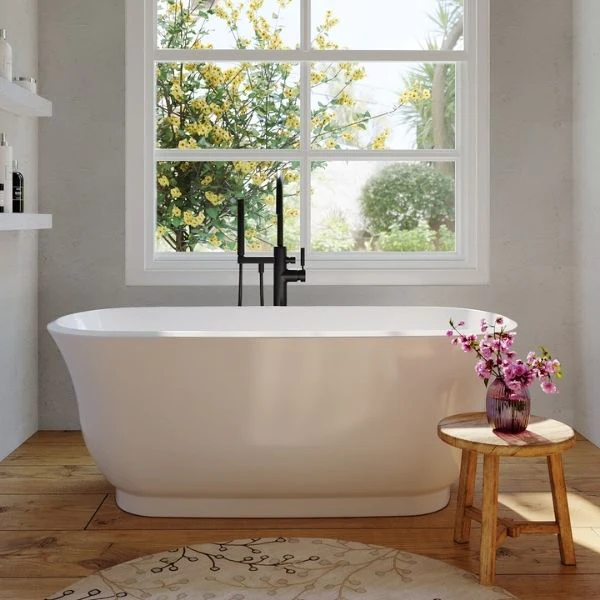 The Blue Space
The Blue Space
My re-cap of how high your bathroom wall tiles should be
If you like a classic luxurious look then the same floor and wall tiles to the ceiling will achieve this. With this look, consider introducing either a ledge in the shower or by the bath to visually create a break. A shower or bath niche is also very effective, but always just use the same tile or they can look like eyes in the room! Consider using wall panelling in areas that don't get wet. You can use a wet area panelling around freestanding baths and behind vanity units which is a very visually appealing and cost effective solution. An effective approach is to use your floor tiles part of the way up the wall and then either switch to a lighter, plainer tile or wall panelling. With the height of these, I generally recommend going to 1200mm high, particularly if you have wall taps as you should place these on the lower section of the wall. If you want to tile behind a vanity unit, then 1200mm is also a good height to consider as this will give you enough space for wall taps or as a splashback to the unit. When you are just tiling in the shower cubicle I recommend tiling to the ceiling.Related: How high should a tiled kitchen splashback be?
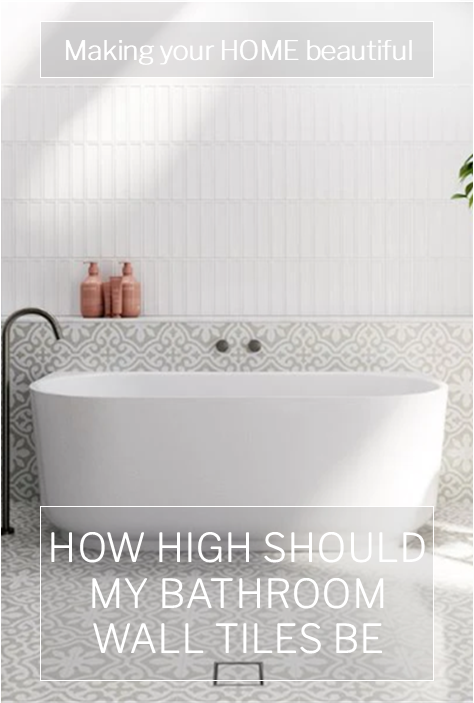
If you are renovating I have lots of information in my Free Resource Library including a FREE e-book on Bathroom renovations and how to create a mood board for your next project. You can sign up for this here.
The post How high should my bathroom wall tiles be? appeared first on Making your Home Beautiful.


